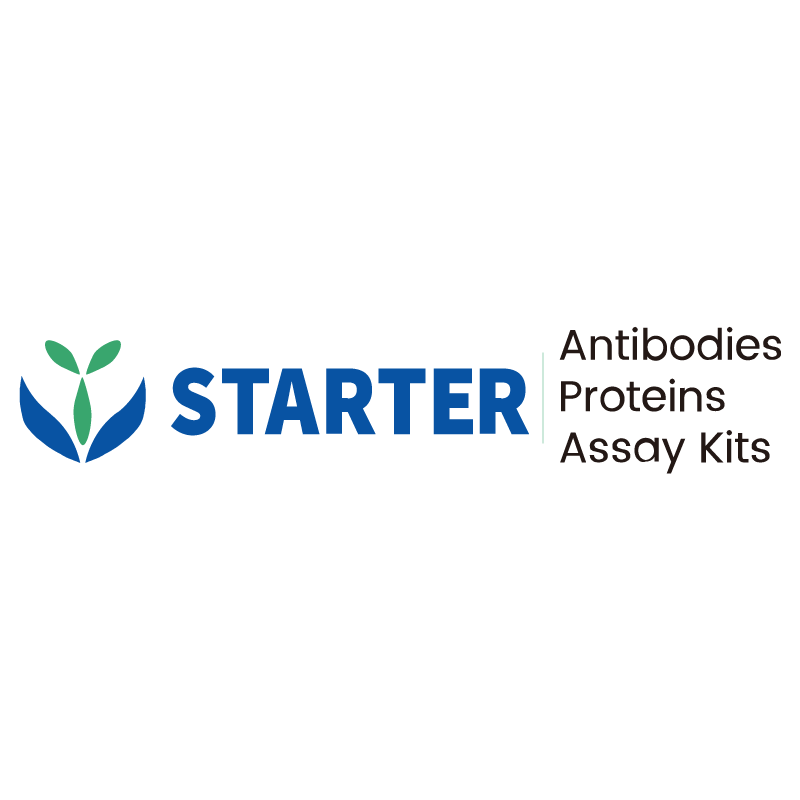WB result of KCNB1 Recombinant Rabbit mAb
Primary antibody: KCNB1 Recombinant Rabbit mAb at 1/1000 dilution
Lane 1: mouse brain lysate 20 µg
Secondary antibody: Goat Anti-rabbit IgG, (H+L), HRP conjugated at 1/10000 dilution
Predicted MW: 96 kDa
Observed MW: 115 kDa
This blot was developed with high sensitivity substrate
Product Details
Product Details
Product Specification
| Host | Rabbit |
| Antigen | KCNB1 |
| Synonyms | Potassium voltage-gated channel subfamily B member 1; Delayed rectifier potassium channel 1 (DRK1; h-DRK1); Voltage-gated potassium channel subunit Kv2.1 |
| Immunogen | Synthetic Peptide |
| Location | Cell membrane |
| Accession | Q14721 |
| Clone Number | S-2527-21 |
| Antibody Type | Recombinant mAb |
| Isotype | IgG |
| Application | IHC-P, ICC |
| Reactivity | Hu, Ms, Rt |
| Positive Sample | SH-SY5Y |
| Purification | Protein A |
| Concentration | 0.5 mg/ml |
| Conjugation | Unconjugated |
| Physical Appearance | Liquid |
| Storage Buffer | PBS, 40% Glycerol, 0.05% BSA, 0.03% Proclin 300 |
| Stability & Storage | 12 months from date of receipt / reconstitution, -20 °C as supplied |
Dilution
| application | dilution | species |
| IHC-P | 1:1000 | Hu, Ms, Rt |
| ICC | 1:50 | Hu |
Background
KCNB1, also known as Kv2.1, is a 96-kDa, 858-amino-acid voltage-gated delayed-rectifier potassium channel α-subunit encoded on chromosome 20q13.3 that forms homo- or heterotetrameric pores (with silent α-subunits like KCNG, KCNV, KCNS families and regulatory β-subunits such as KCNE1-3) responsible for mediating outward K+ currents essential for repolarization of excitable membranes during high-frequency firing . The channel is enriched in somatodendritic domains of cortical and hippocampal neurons, pancreatic β-cells, heart, lungs and retina, and its gating, trafficking and clustering are dynamically regulated by phosphorylation/dephosphorylation of its cytoplasmic N- and C-termini in response to neuronal activity, transmitters, Ca2+/calcineurin signalling and oxidative stress, thereby controlling neuronal excitability, insulin secretion and apoptosis . Pathogenic KCNB1 variants produce epileptic encephalopathy, developmental delay and motor impairment by disrupting ion selectivity or inducing gain-of-function cation conductance.
Picture
Picture
Western Blot
Immunohistochemistry
IHC shows positive staining in paraffin-embedded human cerebral cortex. Anti-KCNB1 antibody was used at 1/××× dilution, followed by a HRP Polymer for Mouse & Rabbit IgG (ready to use). Counterstained with hematoxylin. Heat mediated antigen retrieval with Tris/EDTA buffer pH9.0 was performed before commencing with IHC staining protocol.
IHC shows positive staining in paraffin-embedded mouse cerebral cortex. Anti-KCNB1 antibody was used at 1/××× dilution, followed by a HRP Polymer for Mouse & Rabbit IgG (ready to use). Counterstained with hematoxylin. Heat mediated antigen retrieval with Tris/EDTA buffer pH9.0 was performed before commencing with IHC staining protocol.
IHC shows positive staining in paraffin-embedded rat cerebral cortex. Anti-KCNB1 antibody was used at 1/××× dilution, followed by a HRP Polymer for Mouse & Rabbit IgG (ready to use). Counterstained with hematoxylin. Heat mediated antigen retrieval with Tris/EDTA buffer pH9.0 was performed before commencing with IHC staining protocol.
Immunocytochemistry
ICC shows positive staining in SH-SY5Y cells. Anti-KCNB1 antibody was used at 1/50 dilution (Green) and incubated overnight at 4°C. Goat polyclonal Antibody to Rabbit IgG - H&L (Alexa Fluor® 488) was used as secondary antibody at 1/1000 dilution. The cells were fixed with 100% ice-cold methanol and permeabilized with 0.1% PBS-Triton X-100. Nuclei were counterstained with DAPI (Blue). Counterstain with tubulin (Red).


